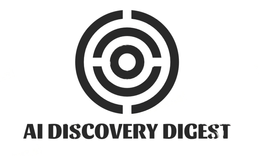Agriculture is on the brink of a revolution, and drones are at the forefront. These high-tech flying machines are transforming traditional farming methods into efficient and precise operations. Imagine a farmer monitoring vast fields from above, spotting problems before they escalate. This scenario is not far-fetched; it’s happening right now.
As technology advances, agricultural drone technology has evolved tremendously, becoming smarter with each new innovation. The integration of artificial intelligence (AI) marks a significant leap forward in how we approach farming challenges. From crop health assessments to soil analysis, AI-driven drones can offer insights that were once unimaginable.
With this groundbreaking combination of aerial observation and machine learning capabilities, the future of agriculture looks promising. Join us as we explore how AI is reshaping agricultural drone technology and what this means for farmers worldwide.
The Rise of AI in Agriculture
The agricultural landscape is undergoing a remarkable transformation. At the heart of this change lies artificial intelligence. As farms expand, farmers face new challenges that demand innovative solutions.
AI technologies are now being integrated into various aspects of farming. From precision agriculture to crop monitoring, the benefits are becoming clear. Algorithms can analyze vast amounts of data quickly and accurately, allowing for better decision-making.
Farmers can leverage AI to optimize irrigation schedules and predict pest infestations before they wreak havoc on crops. This proactive approach not only saves time but also reduces resource waste.
Machine learning models continue to evolve. They improve with each growing season, refining their predictions based on past outcomes. The rise of AI in agriculture signals a smarter future for food production and sustainability efforts worldwide.
Benefits of AI in Agricultural Drones
AI integration in agricultural drones revolutionizes farming. These drones can analyze vast fields in a fraction of the time it takes traditional methods. This efficiency means farmers spend less time monitoring crops and more time on strategic planning.
Precision agriculture is another significant advantage. AI algorithms process data from various sensors, providing insights into crop health, moisture levels, and nutrient needs. Farmers can then apply resources more effectively, reducing waste while maximizing yield.
Predictive analytics powered by AI helps forecast potential issues like pest infestations or diseases before they become critical problems. Early detection allows for timely interventions, preventing costly losses.
Cost-effectiveness can’t be overlooked either. By optimizing resource use and improving yields, AI-driven drones contribute to better profit margins for farmers struggling with rising operational costs.
Challenges and Limitations
While AI-enhanced agricultural drones offer remarkable advantages, they are not without their challenges. One significant issue is the high cost of implementation. Small-scale farmers may find it difficult to invest in advanced drone technology.
Another concern lies in data management. Drones generate vast amounts of information that require proper analysis and interpretation. Many farmers may lack the technical expertise to utilize this data effectively.
Regulatory hurdles also pose a challenge. Compliance with local aviation laws can complicate drone operations, creating barriers for broader adoption.
There are concerns about privacy and security. The use of drones raises questions regarding surveillance over private lands, which can lead to tensions within communities.
Weather conditions further impact the effectiveness of these technologies. Unpredictable elements like rain or wind can hinder flight capabilities and compromise data collection efforts, limiting their reliability during crucial farming periods.
Case Studies: Successful Implementation of AI in Agricultural Drones
One notable case is the partnership between a leading ag-tech company and a large-scale corn producer in Iowa. By deploying AI-powered drones, they monitored crop health across thousands of acres. The drones analyzed imagery to detect nutrient deficiencies early on, allowing timely interventions.
Another inspiring example comes from vineyards in California. Here, farmers utilized drones equipped with machine learning algorithms to assess grape quality. The data collected helped optimize irrigation schedules and predict harvest dates more accurately.
In Brazil, coffee growers turned to drone technology for pest management. AI systems identified areas affected by pests or diseases through high-resolution imaging. As a result, targeted treatments reduced pesticide use while increasing yields significantly.
These implementations illustrate how agricultural drones equipped with AI can transform farming practices worldwide, driving efficiency and sustainability in various sectors of agriculture.
Conclusion
The intersection of AI and agricultural drone technology is reshaping the farming landscape. As farmers face challenges such as climate change, resource scarcity, and a growing global population, innovative solutions are more important than ever.
AI enhances drones by enabling smarter data analysis and precise decision-making. This results in efficient operations that can save time and reduce costs while maximizing yield. The benefits are clear: improved crop health monitoring, optimized irrigation practices, and effective pest management.
Despite these challenges, success stories abound across different regions worldwide. Farmers implementing AI-enabled drones have reported significant improvements in their productivity and sustainability efforts.
As agriculture continues to evolve with technological advancements at its core, the future looks promising for those who embrace these changes early on. By leveraging AI within agricultural drone technology, we may witness a new era of efficiency that not only boosts profits but also fosters environmental stewardship on farms everywhere.


